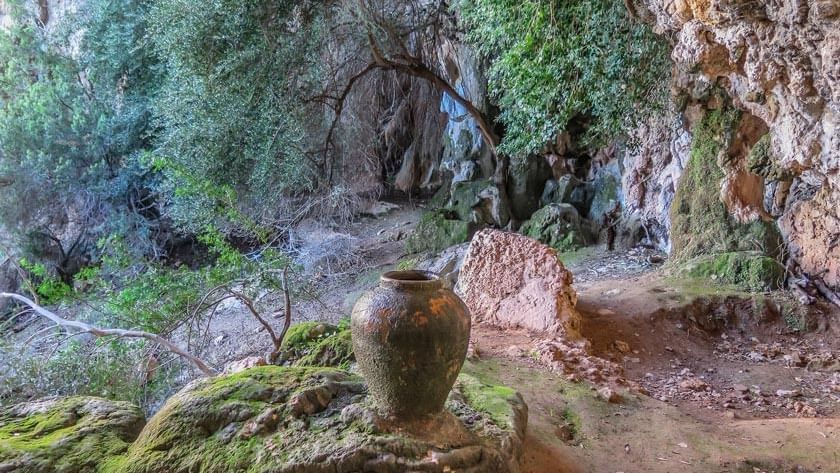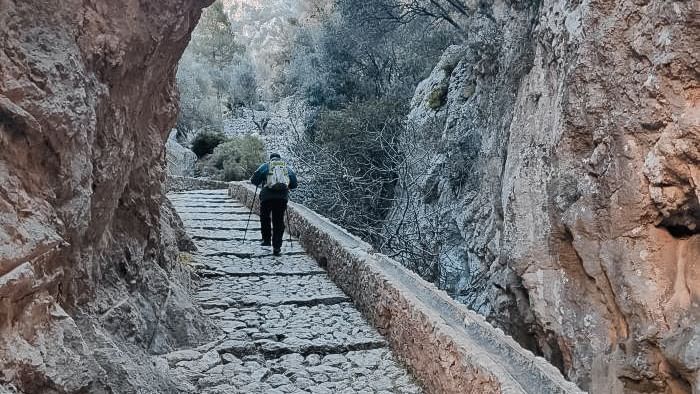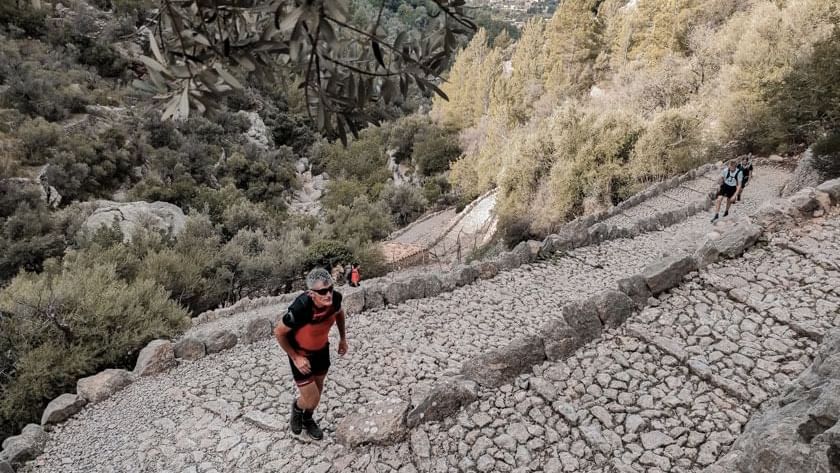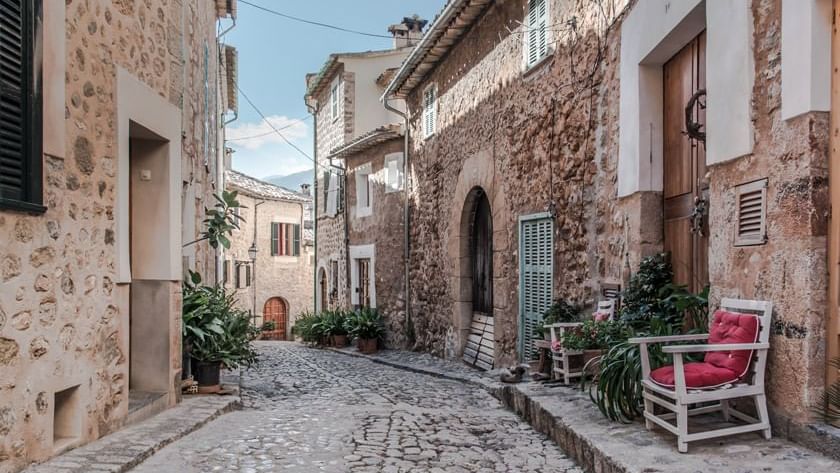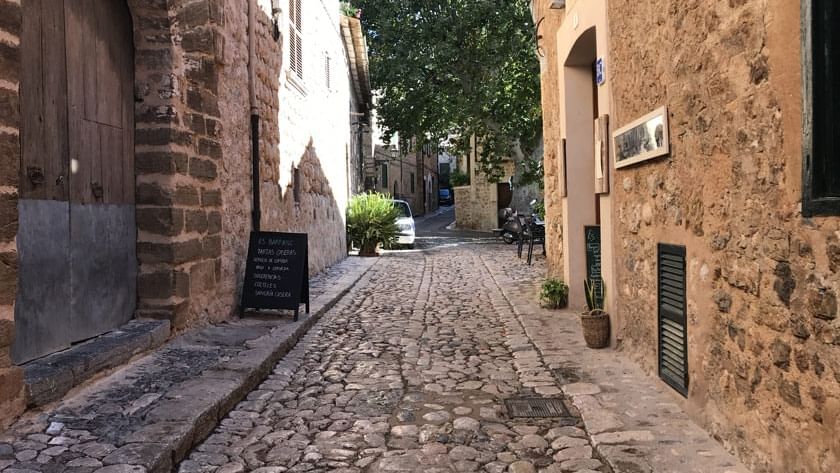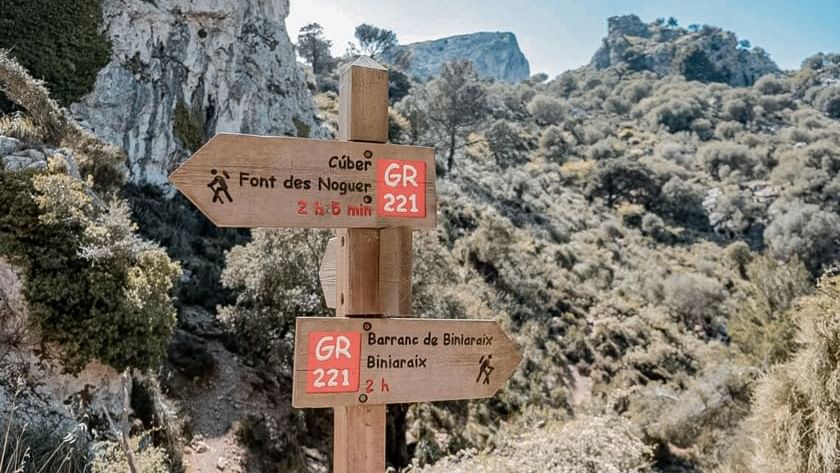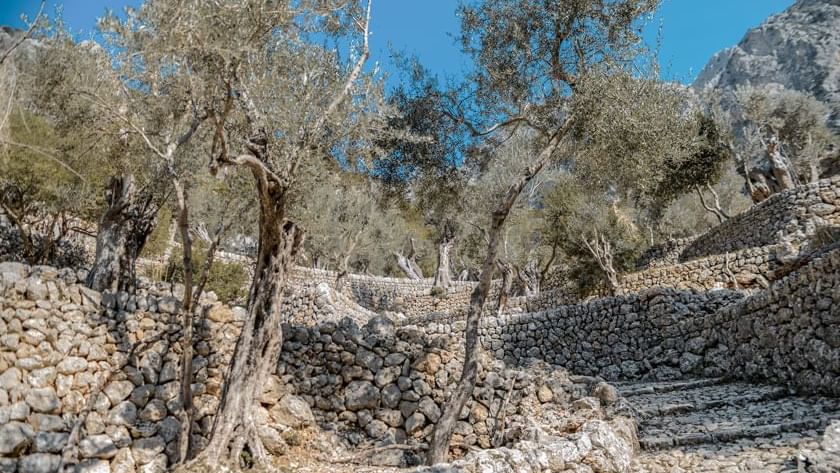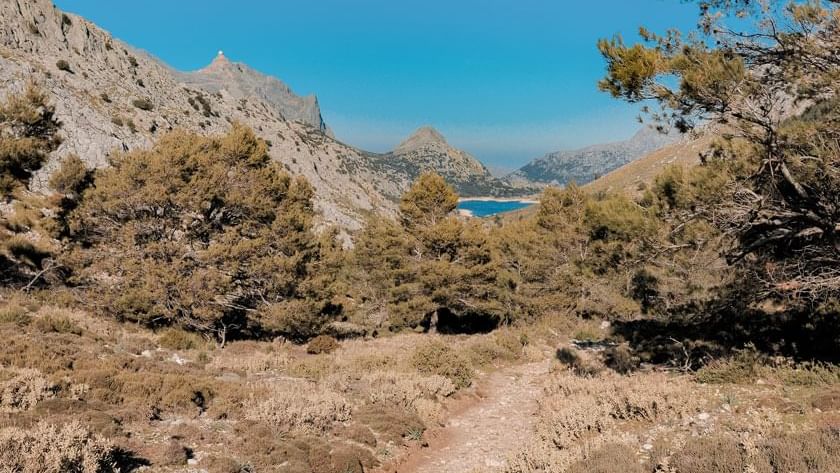DISCOVER THE BINIARAIX RAVINE AT ONE OF THE BEST TIMES OF THE YEAR
If you have visited or are going to visit the Valley of Sóller, you will probably already know that it is known, among many other things, for being the starting point of many of the most emblematic hiking routes in the Tramuntana mountain range. Routes full of history that allow us to enjoy nature and fresh air as well as to discover incredible landscapes in this magical enclave located between the Mediterranean Sea and the Tramuntana mountains. Undoubtedly, a unique privilege and an unequalled attraction for lovers of hiking, nature and mountain sports. However, it is not the same to walk these routes at the beginning of the year or in summer as it is in autumn and winter, as the climate, the atmosphere and even the landscape itself varies greatly depending on the time of year. That is why today we are going to talk about one of these emblematic routes, if not the most emblematic, and discover how to make the most of it at one of the best times of the year to do so: The Barranc de Biniaraix in November.
BRIEF HISTORY
The Barranc de Biniaraix is a canyon formed by the torrent of L'Ofre, located between the Sierra de Son Torrella, L'Ofre and Els Cornadors, through which the Barranc de Biniaraix path runs. A stepped stone path built by man that runs between terraces in this magical place in the Tramuntana. It was built to connect the Valley of Sóller with the Lluc Sanctuary, which made the path one of the most important pilgrimage routes in the mountain range. It was also used to connect the Pla de Mallorca with the Tramuntana through Orient and Alaró. The Barranc de Biniaraix was declared a site of cultural interest in 1944 due to the extraordinary architecture that can be seen along its 1,932 steps that are over 500 years old. It is undoubtedly a work of art that reflects the art of dry-stone construction. But in the Barranc de Biniaraix there is not only the current 500-year-old path, which is part of and was decisive for the creation of the famous "pedra en sec" GR-221 route, but there is another much older path, "el camí vell", which is the one that gives rise to the ravine and which was used by the first Mallorcans to go on pilgrimage and cross the Sierra de Tramuntana mountain range.
This path is considered a sacred place because it was a place of pilgrimage where the dead were buried in its innumerable caves. Two of the most famous are the cave of s'Alova, due to its large size and importance, as this is where the upper class of the first prehistoric settlements in the Sóller Valley were buried, and the cave of Ses Afàbies (jars), where water was collected from the stalactites with these utensils. We can still see some of them today.

EXCURSION TO THE RAVINE IN NOVEMBER
As we have already mentioned, the Barranc de Biniaraix is a karstic canyon modelled by the friction of water and limited by Es Cornadors and the Son Torrella mountain range. So it is a place through which water flows. And this is one of the main reasons why this excursion in November is one of the best options. During these months of the year, with the rains, we can see water flowing almost all along the route. Water flows along the slopes of the Barranc, organised in small agricultural plots delimited by terraces, where olive, carob and almond trees are cultivated. It is like witnessing a dance in which water embraces nature in an orderly fashion to bring it to life. Something that we can only see at this time of year without having to worry about the cold winter temperatures. So, having said that, we will start our tour from the Plaça Constitució, located 2 minutes' walk from the Gran Hotel Sóller, and set off in the direction of Biniaraix along Carrer de Sa Lluna. When we reach Biniaraix, we can take the opportunity to make a brief stop right next to Ses Rentadores de Biniaraix, where the path to Barranc de Biniaraix begins, and after a short break we will begin our excursion through this magical place that reflects the integration of the dry stone constructions in nature. So once here we just have to follow the signs and indications of the GR-221 path that we will find to follow the path of Barranc de Biniaraix and enjoy the route and the fantastic landscapes of the Tramuntana, the Valley of Sóller and even the Mediterranean Sea.
A few minutes into the walk you will be able to see the immeasurable work that went into its construction, as well as the beautiful views of the small "llogaret" of Biniaraix with its bell tower in the background. During the ascent, we will enter the Tramuntana mountain range and we will discover how man's construction and nature can be in harmony without destroying the environment. We will pass over several bridges and even cross a narrow pass between the mountains called S'Estret or Sa Campana where there is a large waterfall and where it is said that if you throw a small stone towards the waterfall, when it bounces back, it rings like a bell. You will then reach a point where you can choose between continuing towards L'Ofre or taking the path to the right towards the Font de Can Cati, which will allow us to take an alternative path and descend the Barranc de Biniaraix in a circular way. It should be noted that the excursion to the Barranc de Biniaraix is a fantastic route to enjoy the Serra de Tramuntana with the family, however, most of the way up is a 756-metre climb between Biniaraix and the summit of the Barranc, so it can be a tough climb. We therefore recommend that you decide at this point whether to continue the hike to L'Ofre and then descend back to Biniaraix or whether to take the circular route and return at this point. There is also another easier and less strenuous option for enjoying the Barranc: we can go up by bus to L'Ofre and from there descend the Barranc de Biniaraix until we reach Sóller again. To do this option, all you have to do is go to the bus stop at Plaza América, a 5-minute walk from the Gran Hotel Sóller, and take bus number 231 Port de Sóller - Alcudia.
Whichever route you take, you will eventually descend and arrive back at Ses Rentadores de Biniaraix. Once here, we recommend you go down to the Biniaraix square and have a refreshment in one of the two bars in the area to rest and get some energy before returning to the centre of Sóller with a pleasant downhill walk, perfect for letting your legs go after having done one of the most characteristic, magical, historical and iconic hiking excursions of the Tramuntana mountain range.
If you are staying at our hotel and would like more information about the Barranc de Biniaraix and other hiking routes in and around the Tramuntana, as well as other places to visit in the Sóller Valley, please do not hesitate to ask our reception team, who will be delighted to help you.
|
INFORMATION OF INTEREST |
